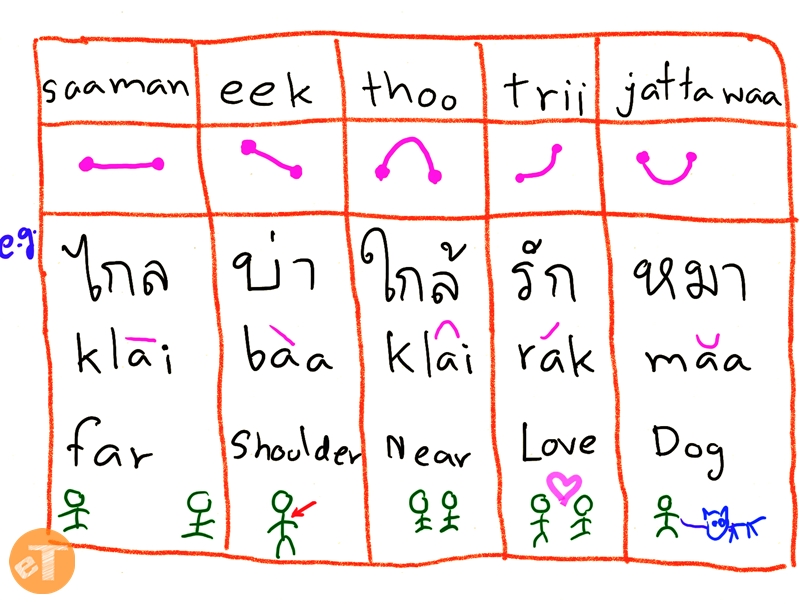For foreigners who learn Thai language, this tonal language can be challenging for English and European language speakers because once you change the tone, the meaning of the Thai word changes as well. On that note, Thai tones are very important for people who learn to speak Thai correctly.
Thai language has a total of five tones: Saaman, Eek, Thoo, Trii, and Jattawaa. If you have learned Thai, you might familiar with the terms “Flat, Low, Falling, High, and Rising,” indeed I used those terms in the previous articles. You can use either way, but I encourage you to use the real Thai terms (Saaman, Eek, Thoo, Trii, and Jattawaa,) so you won’t be confused when you learn to write Thai alphabets in the future (if you decide to do so.) Now let’s see how to pronounce each tone.
Did you see what happened when the tone change? That’s right the word “near” and “far” are spelled the same way in phonetic system and pronounced the same way as well. What different is just both words have different tone. So the best way to learn to speak Thai is to go out and speak with Thai locals. How to be around locals? Check the coolest and most authentic Thailand travel website out!


Pingback: Basic Sentence Structure Of Thai Language | eThaier